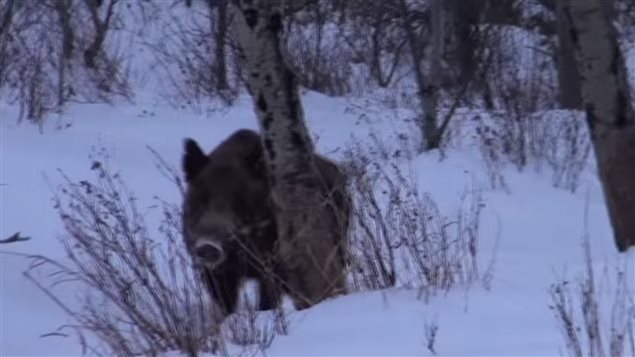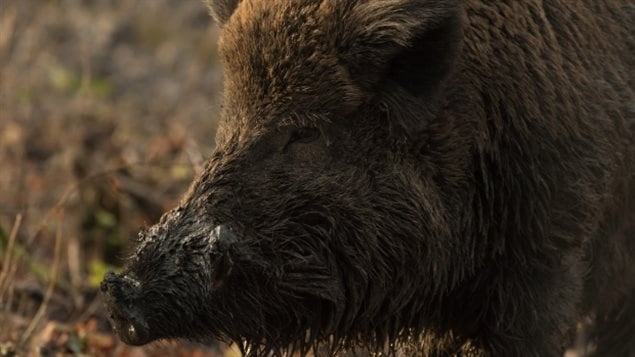It’s a growing concern for farmers and conservationists from Ontario westward to British Columbia.
As the numbers of wild boars and feral pigs grow, so to does the damage they are doing to crops and land, livestock, and other wildlife.
In west coast British Columbia a meeting of some 150 invasive species experts is being held this week in the city of Richmond to discuss the problem of feral pigs and boars, as well as other noted invasive species, nutria (a large rat-like animal), and sea creatures like the green crab.
The concern is that the feral pig and boar populations are growing rapidly and expanding their range.
The wild pigs and boars can produce litters of about 6 piglets or more, two or three times a year. As ominvores they root through crops eating not only the plants but causing destruction to the ground digging up roots resulting in longer term damage. They also go into wetlands and destroy nests and eat eggs of waterfowl and any ground nesting birds. They also carry disease that can be easily transmitted to domestic livestock

Growing up to 200 kilograms, they live in large family packs and can be quite aggressive if threathened.
The concern in British Columbia, as elsewhere, is that the numbers are not known.
Wild pigs have been reported in several areas of the province including the Chilcotin and Cariboo regions, north and south Okanagan, the lower mainland, and even Vancouver Island.
Gail Wallin, executive director of the Invasive Species Council of B.C. is quoted in the National Post newspaper saying, “This is a high priority species that has done a lot of damage in other areas,” said Wallin. “We need the government to invest in eradication and to move very quickly. It’s much easier to contain and respond to invasives if we catch them early.”
When settlers first came to Canada and brought European pigs, some of course escaped. That’s been happening ever since.
In Canada, wild boars were brought in to the country in several different amounts and provinces from the 1970s as an exotic food species, but there were escapes there as well.

European boars were introduced in the US over 100 years ago as game species for wealthy hunters. In various cases a number escaped and later mated with escaped feral pigs. Since then the numbers have swelled across the US causing millions of dollars in damage every year.
The wild pigs and boars have easily adapted to all regions in Canada,
Open season on feral pigs/boars
In an effort to contain them, in 2014 the B.C. government has said that any licensed hunter can hunt them anytime anywhere. Manitoba did the same but back in 2001
In 2008, Alberta introduced a bounty of $50 on wild boar.
In spite of that, hunting seems to have had very little affect on the growing population and problem. In addition they are often nocturnal, and hunters say the animals are extremely wary.
Ryan Brook, a biologist at the University of Saskatchewan, who has been studying the animals for several years, said in a 2014 report that left unchecked the number of wild boar/pigs could surpass the human population in the province. The animals have already been reported in about a third of the province’s municipalities.
Addtional information-sources







For reasons beyond our control, and for an undetermined period of time, our comment section is now closed. However, our social networks remain open to your contributions.